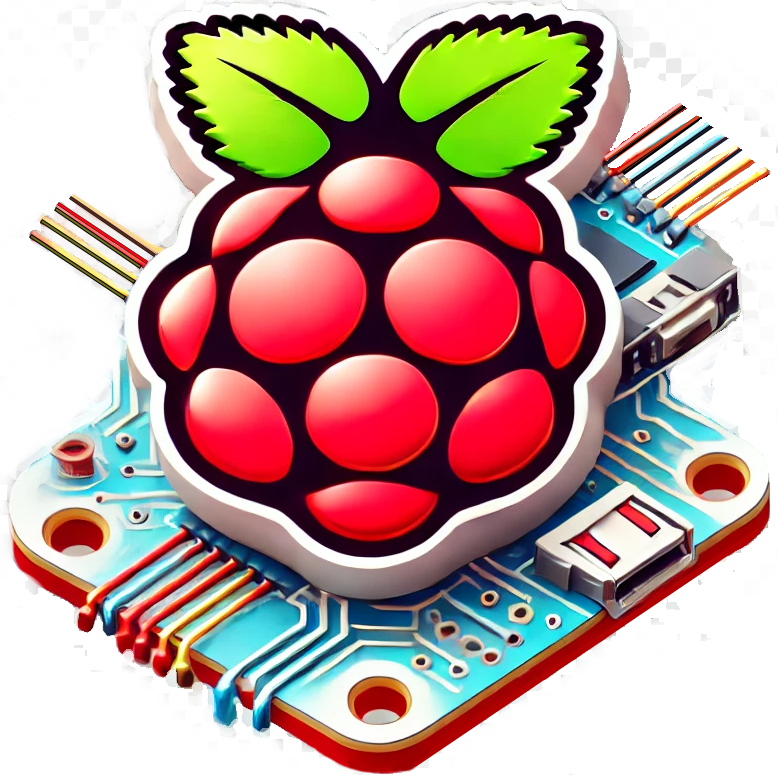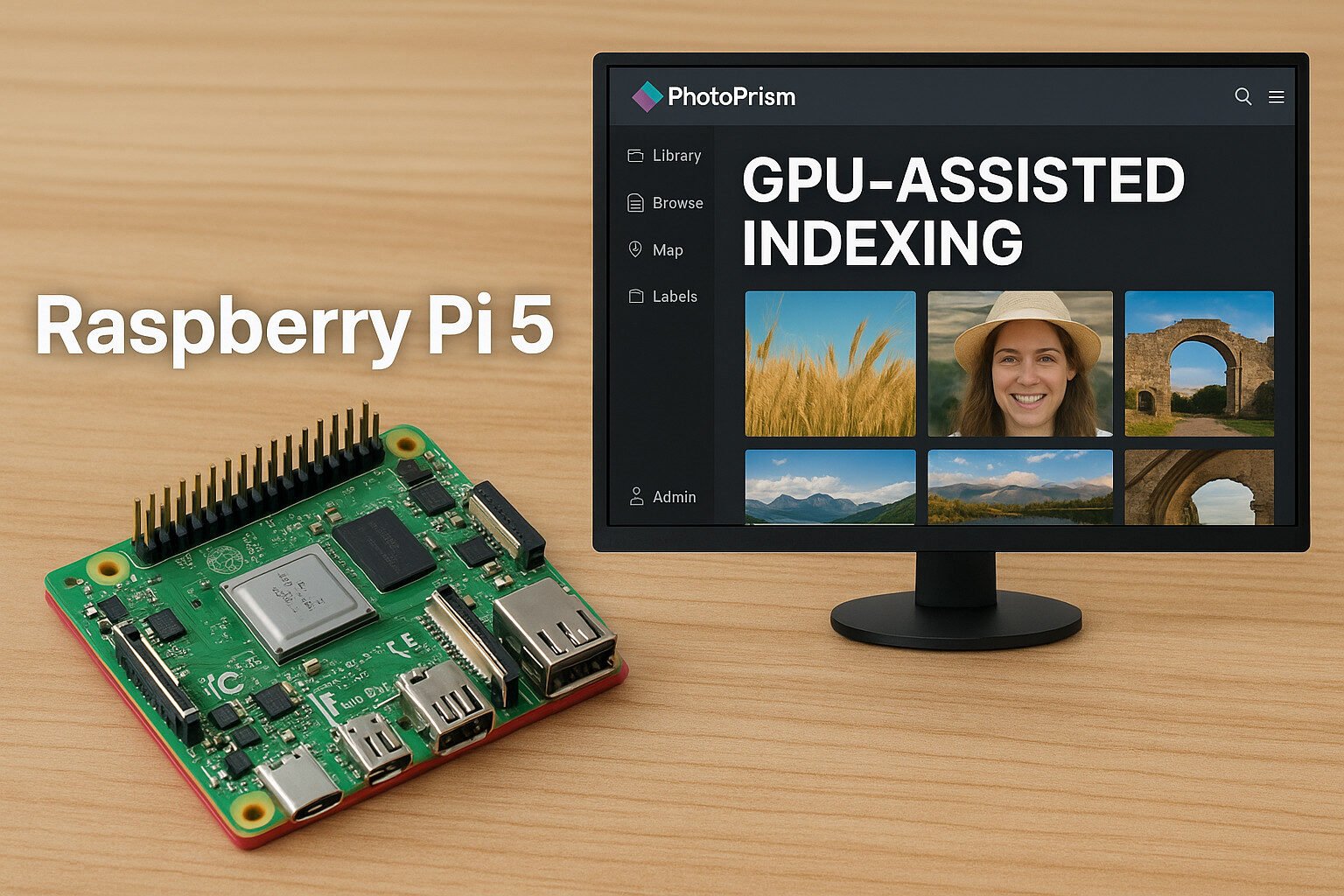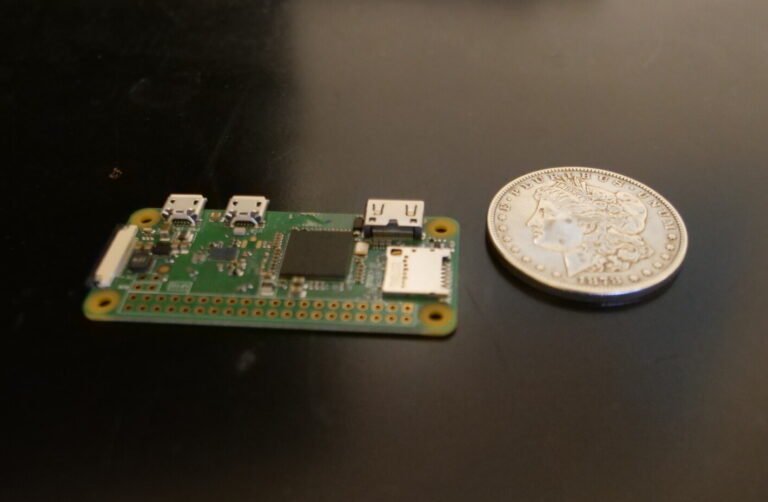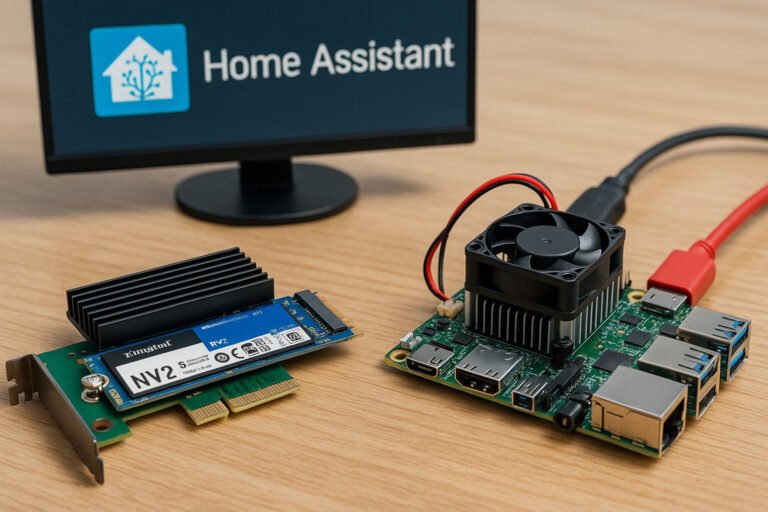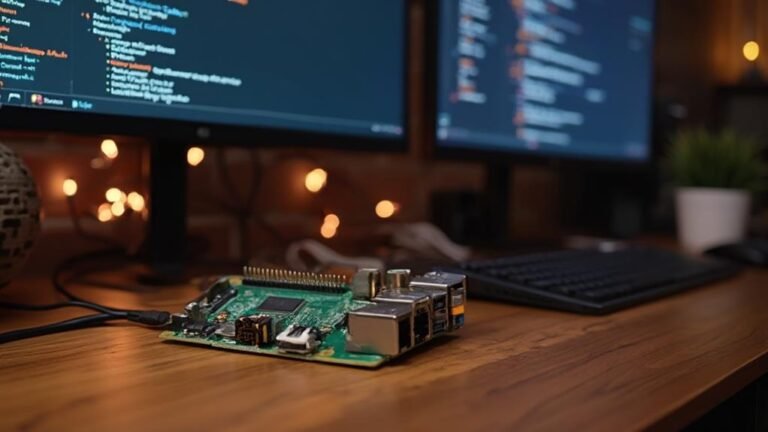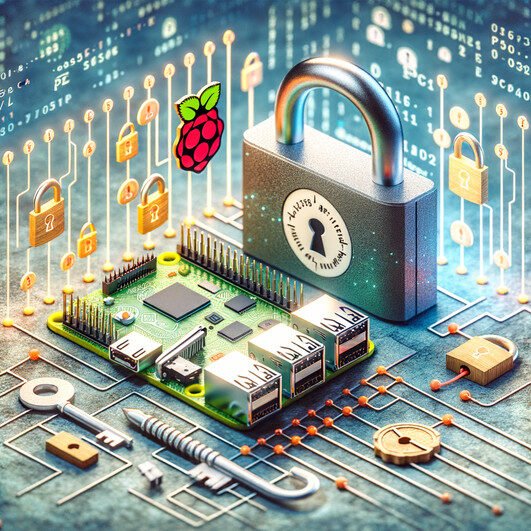Photoprism on Raspberry Pi 5, GPU assisted indexing
Introduction
PhotoPrism on Raspberry Pi 5 is the setup you didn’t know you needed until your phone ran out of storage for the third time this month. If you’re like most folks with a messy photo library, you’re probably wondering how to make sense of 20,000 half-blurry memories. The good news? Raspberry Pi 5 has enough punch to actually run PhotoPrism decently—especially if you can tap into GPU-assisted indexing. That means faster scans, better face tagging, and less time waiting for thumbnails to generate.
Now, before we get going, you’ll need a few things: a Raspberry Pi 5 (obviously), a power supply that doesn’t cry under pressure, and some patience. This guide walks you through installing PhotoPrism using Docker, setting up storage for your photos, and using whatever GPU help you can squeeze out of the Pi. Spoiler: TensorFlow Lite helps, Coral USB helps more, and Raspberry Pi’s built-in GPU… well, it tries.
We’ll talk about Docker containers, facial recognition, indexing, and all the nerdy bits—without pretending you’re building a data center. Whether you’re just getting started or trying to wring more power out of your setup, this is your one-stop tour of what works, what doesn’t, and where things get weird.
Key Takeaways
- Raspberry Pi 5 runs PhotoPrism well, especially with 8GB RAM and SSD storage
- Docker makes deployment easier and keeps things isolated
- GPU-assisted indexing works best with Coral USB or TensorFlow Lite
- Proper backups and scheduled maintenance prevent major headaches
- You don’t need to be a sysadmin to manage your photo collection
Hardware and System Requirements
Choosing Your Raspberry Pi 5 Configuration
The Raspberry Pi 5 isn’t just a faster version of the Pi 4. It’s got an RP1 I/O controller, PCIe lane support, and a much-needed kick in RAM and CPU performance. If you’re planning to use PhotoPrism regularly, get the 8GB version. The 4GB model works, but it’ll tap out faster than your uncle trying to explain TikTok.
Recommended Storage Options
Photo libraries are space hogs. A microSD card just isn’t going to cut it unless you like corruption and slow I/O. For real performance, use a USB 3.0 SSD or go all in with an NVMe drive using a PCIe adapter. You’ll thank yourself later when indexing 100GB of vacation photos doesn’t turn into a weekend project.
| Storage Type | Speed | Recommended For |
|---|---|---|
| MicroSD (A2) | Slowest | OS only, light usage |
| USB 3.0 SSD | Good | Medium to large libraries |
| NVMe via PCIe | Best | Heavy usage, large libraries |
Power Supply and Connectivity
The Pi 5 wants power—at least 27W if you’re using accessories and high-load indexing. Cheap power supplies will crash your setup faster than Windows ME. Get a USB-C PD unit that can handle spikes. Also, use Gigabit Ethernet if you’re moving media over the network. Wi-Fi will work, but it’s going to throttle your photo transfer speeds.
Preparing the OS
Installing Raspberry Pi OS
Start with Raspberry Pi OS Bookworm (64-bit). The Lite version is great if you don’t need a GUI; otherwise, use the desktop version. Use Raspberry Pi Imager or balenaEtcher to flash the image. Just make sure you’re not trying to use some crusty old microSD card from 2017.
Initial Configuration
After first boot, run sudo raspi-config. Set your timezone, locale, and keyboard layout unless you want your logs timestamped in some random part of the world. Enable SSH if you’re running headless, and change the hostname unless “raspberrypi” feels unique to you.
System Updates
Before installing anything, update your system. Run:
sudo apt update && sudo apt full-upgrade -yThen reboot. You’ll probably get kernel and firmware updates, which you want before layering on Docker and PhotoPrism. Skipping updates now usually means fixing weird breakages later.
Installing Docker and Docker Compose
Install Docker on Raspberry Pi OS
Docker lets you run PhotoPrism in a clean, isolated environment. To install it on Raspberry Pi OS, use the official convenience script:
curl -fsSL https://get.docker.com -o get-docker.sh
sudo sh get-docker.shAdd your user to the Docker group so you’re not using sudo every time:
sudo usermod -aG docker $USERThen reboot or log out and back in. It won’t work until you do.
Install Docker Compose
You’ll need Docker Compose to run multi-container setups (PhotoPrism + MariaDB). The Python pip method is easiest:
sudo apt install python3-pip
sudo pip3 install docker-composeOr grab the binary if you’re picky about versions.
Testing Docker
Run this to test if Docker works:
docker run hello-worldIf it says “Hello from Docker!” you’re good to go. If it complains about permissions or missing daemons, something went sideways. Check your user group and daemon status with:
sudo systemctl status dockerDownloading and Configuring PhotoPrism
Pulling the Docker Image
Get the official PhotoPrism image for ARM64. Pull it with:
docker pull photoprism/photoprism:latestFor Raspberry Pi 5, the latest ARM64 tag usually works fine, but you can pin a specific version if you’re paranoid about breakage.
Creating Your docker-compose.yml
Set up a working directory and drop in a docker-compose.yml:
version: "3.5"
services:
photoprism:
image: photoprism/photoprism:latest
depends_on:
- mariadb
ports:
- "2342:2342"
environment:
PHOTOPRISM_ADMIN_PASSWORD: "changeme"
PHOTOPRISM_ORIGINALS_LIMIT: 5000
PHOTOPRISM_DEBUG: "false"
volumes:
- ./photoprism/originals:/photoprism/originals
- ./photoprism/storage:/photoprism/storage
mariadb:
image: mariadb:10.6
restart: unless-stopped
environment:
MYSQL_ROOT_PASSWORD: "example"
MYSQL_DATABASE: photoprism
MYSQL_USER: photoprism
MYSQL_PASSWORD: secret
volumes:
- ./database:/var/lib/mysqlChange passwords unless you enjoy living dangerously. You can also map external drives for originals and storage if you’re using SSDs or NAS mounts.
Setting Admin Credentials and DB
The PHOTOPRISM_ADMIN_PASSWORD sets your web login. You’ll also want to secure your MariaDB container—use Docker secrets or strong environment values in production setups.
Once you’re happy, run:
docker-compose up -dAnd just like that, you’ve got PhotoPrism running in containers, quietly judging your photo organization.
Optimizing for GPU-Assisted Indexing
Checking for Hardware Acceleration
So, the Raspberry Pi 5 has a GPU—but it’s not exactly going to win any benchmarks. That said, it supports Vulkan and OpenCL via Mesa drivers, which means it can offload some of the work. TensorFlow Lite is your best bet unless you’ve got a Coral USB stick hanging around.
To check if your system supports GPU offloading, run:
vulkaninfo | lessOr check OpenCL support with:
clinfoIf those return actual data and not angry errors, you’re at least on the right track.
Enabling TensorFlow Acceleration
Inside the PhotoPrism container, TensorFlow Lite can be enabled with minimal effort. But keep in mind that full TensorFlow with GPU support is not practical on a Pi due to binary compatibility issues. You can try:
apt install libtensorflow-lite-devAnd then map it into your container if you’re customizing builds. Most folks won’t bother—and honestly, that’s fine.
Using Coral USB Accelerator (Optional)
If you’re lucky enough to have a Coral USB, install the Edge TPU runtime on the host:
echo "deb https://packages.cloud.google.com/apt coral-edgetpu-stable main" | sudo tee /etc/apt/sources.list.d/coral-edgetpu.list
curl https://packages.cloud.google.com/apt/doc/apt-key.gpg | sudo apt-key add -
sudo apt update
sudo apt install libedgetpu1-stdAdd udev rules so Docker can see it:
SUBSYSTEM=="usb", ATTR{idVendor}=="1a6e", MODE="0666"And pass it through with --device in your docker-compose or Docker run.
Performance Gains Explained
On a plain Pi 5, indexing a large library might take hours. With Coral or TensorFlow Lite tweaks, you can see up to 30-40% reduction in CPU usage and noticeably faster classification. Face detection, in particular, gets a nice speed bump when offloading inference.
Indexing and Managing Your Photo Library
Importing Photos
You’ll need to load up your originals directory with photos before PhotoPrism can index anything. This folder is mounted inside the container—make sure it points to your SSD or external storage if you’re using one. You can set up your imports manually or drop files into the folder and let the indexer handle it on startup.
For a one-time indexing, use:
docker exec -it photoprism photoprism indexOr to continuously scan for new files, run:
docker exec -it photoprism photoprism watchMetadata Handling
PhotoPrism reads EXIF metadata like a detective looking for clues. Timestamps, camera model, GPS location—it’s all there. If your photos are missing GPS, PhotoPrism tries to guess based on folder names or previous entries. Creepy? A little. Handy? Definitely.
You can clean up bad metadata with:
photoprism index --cleanupClassification Features
Once indexed, PhotoPrism automatically tags photos using its built-in AI. That means you get labels like “Beach,” “Car,” or “Face” without having to manually tag anything. Facial recognition groups similar faces, and over time it gets better at guessing who’s who—just don’t expect FBI-level accuracy.
NSFW filtering is also enabled by default, so if you’re scanning a folder full of old college party photos, well… prepare to be judged.
Smart albums let you group photos by location, tags, or people. It’s like folders but actually useful.
Accessing the Web Interface
Navigating the PhotoPrism UI
Once everything’s running, open your browser and go to:
http://<your-pi-ip>:2342You’ll be greeted with a login screen. Use the admin credentials you set in PHOTOPRISM_ADMIN_PASSWORD. If you see spinning thumbnails and awkward selfies, congrats—PhotoPrism is alive.
The UI is divided into several sections:
- Library shows all your indexed images
- Albums groups photos by custom or smart tags
- Search lets you filter by date, camera, location, tags, and even detected faces
Using Filters and Maps
Clicking the map icon brings up geotagged photos overlaid on OpenStreetMap. If you’ve ever wanted to relive that trip to Poughkeepsie in 2011—now you can.
Search filters let you sort photos by:
- Date ranges
- Tags (auto or manual)
- Locations
- Faces
- File types and resolutions
Maintenance Tips
PhotoPrism can get cranky if you don’t clean up. Run regular checks with:
photoprism index --cleanupIf thumbnails are missing or corrupted, force a rebuild:
photoprism convertAnd when in doubt, restart the service:
docker-compose restartThat solves about 80% of problems.
Performance Tuning
Monitoring Resource Usage
Raspberry Pi 5 isn’t exactly a server farm. Keep an eye on your CPU and memory usage, especially during indexing. Use tools like:
htop
docker statsIf you see 100% CPU across all cores for hours, that’s “normal”—but also a sign you might want to tweak things.
Adjusting Swap and RAM
Indexing eats memory, especially with face detection and classification turned on. If you’re running out of RAM and crashing, add a swap file:
sudo fallocate -l 2G /swapfile
sudo chmod 600 /swapfile
sudo mkswap /swapfile
sudo swapon /swapfileThen make it permanent in /etc/fstab.
Running Indexing in Batches
If your library is massive, consider disabling auto-indexing and running it in chunks:
photoprism index --limit 1000Pause indexing when not needed with:
photoprism pauseAnd resume it later:
photoprism resumeThis gives your Pi breathing room and keeps it usable for other tasks—like, you know, existing.
Backups and Automation
Automating Backups
Losing your photo library to a corrupt microSD is a pain only rivaled by losing your Netflix password. Use rsync to back up your PhotoPrism folders to an external SSD or NAS:
rsync -avh /path/to/photoprism/originals /mnt/backup_drive/You can set this up as a cron job to run nightly:
crontab -eAdd a line like:
0 2 * * * rsync -avh /path/to/photoprism/originals /mnt/backup_drive/Scheduled Tasks
Beyond backups, you might want to schedule re-indexing or cleanup tasks. PhotoPrism doesn’t have a built-in scheduler, but Docker + cron gets the job done. You can also use watchtower to auto-update your containers.
Export and Archive Options
Want to archive images for sharing or long-term storage? Use:
photoprism export --format zip --limit 100This creates a nice little ZIP file you can burn to a disc or stash in the cloud, assuming you’re one of those organized people.
Troubleshooting
Common Errors
If PhotoPrism refuses to index anything, check your volume mounts. Misconfigured paths are the number one cause of “Why is this empty?” syndrome. Make sure your Docker volumes point to the actual folders with your photos.
Web Interface Not Loading
No web UI? First, check if the container is even running:
docker psThen confirm port 2342 isn’t blocked by another service. If you’re using a reverse proxy like nginx, make sure it’s not choking on SSL settings.
Slow Indexing
Slow performance often means your Pi is out of memory or your SSD is throttling. Check logs for clues:
docker logs photoprismOr run:
journalctl -u dockerAlso make sure you’re not running indexing and watching at the same time—unless you like waiting.
Log Review Tips
All else failing, dig through the logs. PhotoPrism logs live inside the container:
docker exec -it photoprism tail -f /photoprism/storage/logs/photoprism.logLook for obvious errors like permissions, out-of-memory messages, or missing binaries. If it’s vague, it’s probably permissions.
Wrap-up and What to Explore Next
If you’ve made it this far, congratulations—you’ve turned a $60 computer into a media management powerhouse. Sure, it’s not enterprise-grade, but it’ll sort your photos, recognize faces, and remind you that you took 13 blurry shots of the same dog at the park.
Want to expand on this setup? Here are a few things worth checking out:
- Integrate with Nextcloud to sync your phone photos automatically.
- Pair with Pi-hole and keep trackers away from your media server.
- Use Watchtower to automate container updates.
- Install Cockpit for a GUI system monitor.
- Try Jellyfin if you want to manage videos alongside photos.
Keep your system updated, check your backups occasionally, and you’ll have a solid setup that runs quietly in the background—unlike your browser with 42 tabs open.
FAQ
Can I run PhotoPrism without Docker?
Technically yes, but it’s a mess. Docker keeps things isolated and reproducible. Stick with containers unless you enjoy dependency rabbit holes.
Does the Raspberry Pi 5 GPU actually help with indexing?
A little. TensorFlow Lite gets you some acceleration, and Coral USB gives you more. The built-in GPU isn’t powerful enough to handle deep learning tasks natively.
How big should my SD card be?
Don’t use one for photos. Use a 32GB card for the OS, and external SSD or NVMe for photo storage.
How long does indexing take?
Depends on your library size. A few hundred photos = minutes. Tens of thousands = hours, possibly overnight.
Can I access PhotoPrism remotely?
Yes, with a reverse proxy and dynamic DNS. Just make sure your router ports are set up and secured.
